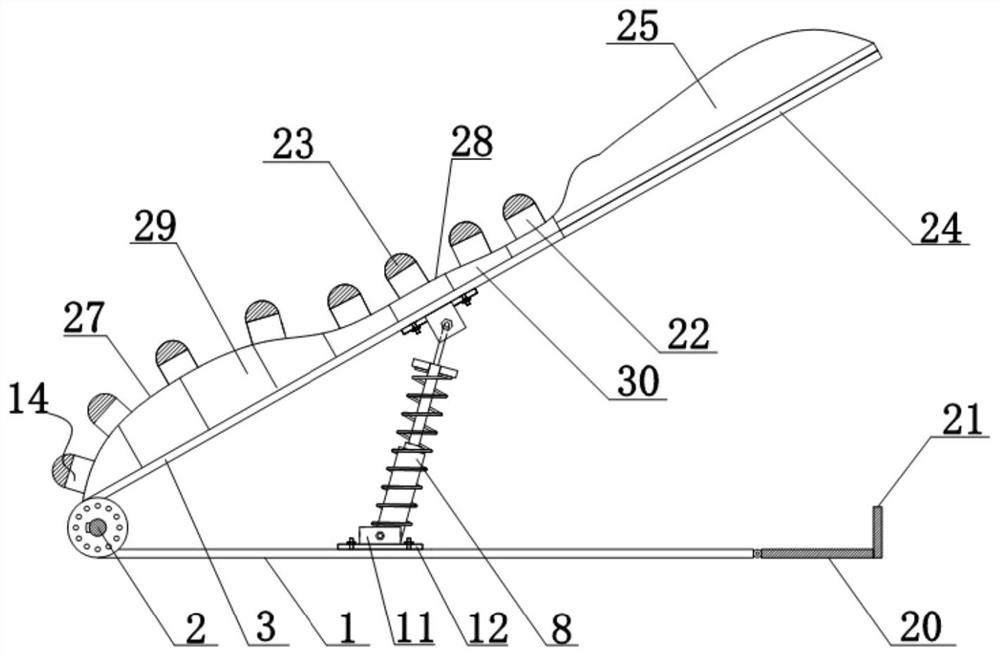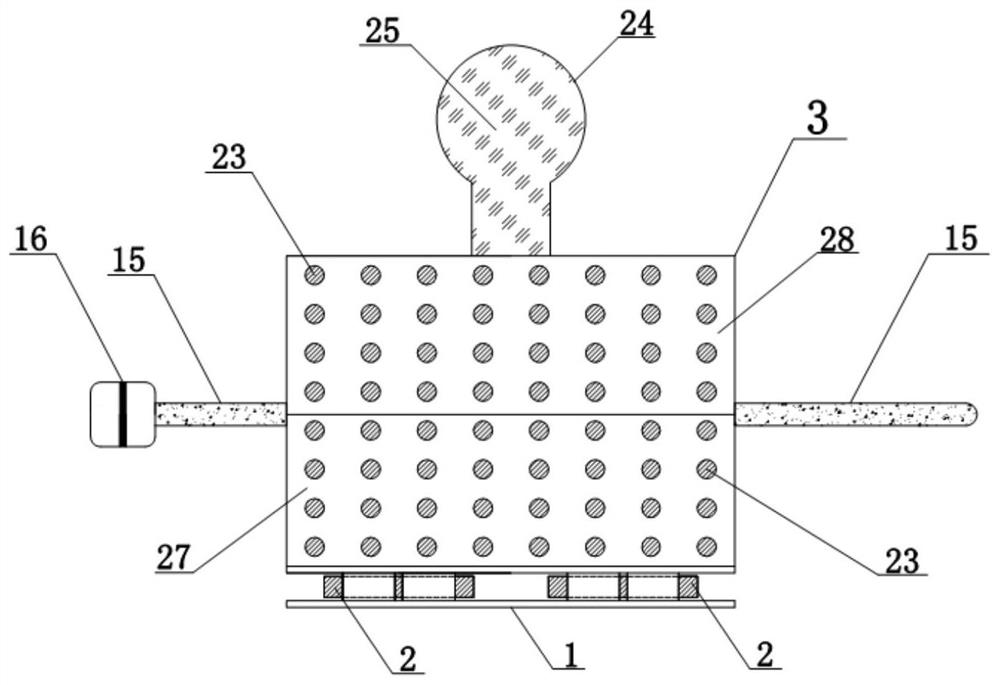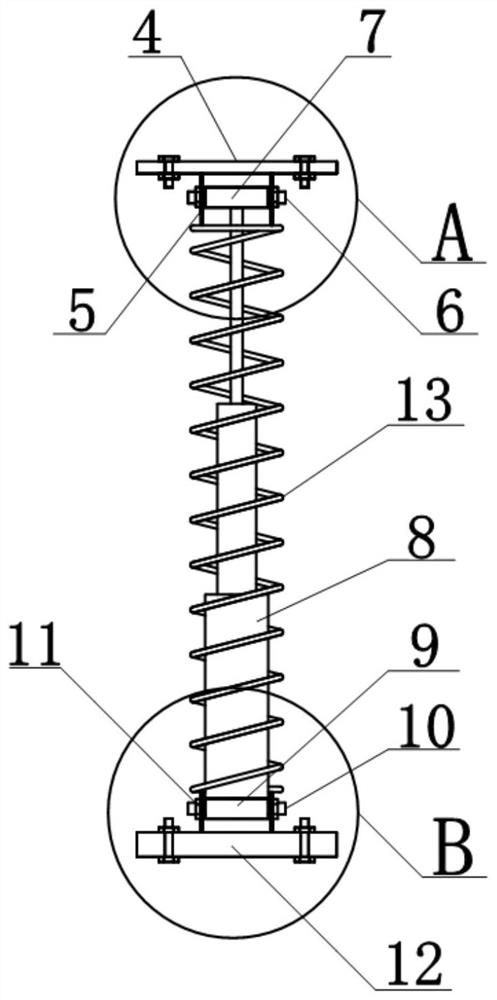Neurosurgery bedside spine rehabilitation device
A rehabilitation device and surgical bed technology, applied in the field of neurosurgery medical equipment, can solve the problems of high exercise intensity, high exercise difficulty, and heavy workload, and achieve the effect of improving safety
- Summary
- Abstract
- Description
- Claims
- Application Information
AI Technical Summary
Problems solved by technology
Method used
Image
Examples
Embodiment 1
[0026] Such as Figure 1-6As shown, a neurosurgical bedside spinal rehabilitation device includes a base plate 1, which is used to support the weight of the entire device and the patient; both sides of the base plate 1 are symmetrically provided with support legs, and the support legs can increase the weight of the base plate 1 during use. stability; the end of the bottom plate 1 is connected with an extension plate 20 through a hinge, and the extension plate 20 can be folded for easy storage; the end of the extension plate 20 is vertically fixed with a baffle 21, and the baffle 21 is in contact with the head of the hospital bed. Provide support for the whole device, prevent the whole device from moving backward when the patient uses the device to do sit-ups and exercise, and improve the stability when using the device. The bushing at the end of the bottom plate 1 is connected to the first rotating shaft 2 through bearings and key pins, and the first rotating shaft 2 is connec...
Embodiment 2
[0034] The applicant found in the process of implementing the present invention that since the human body has a unique physiological curvature of the spine, specifically the physiological lordosis of the lumbar spine and the physiological kyphosis of the thoracic spine, when the patient lies on the support board 3 of the present invention, the support Board 3 cannot match the physiological curvature of the human spine, resulting in insufficient or excessive support for the lumbar and thoracic spine of the human body, causing discomfort in the support of the spine and muscles of the patient during exercise, and the problem of poor exercise effect on the patient. Therefore, the applicant Further improvements were made to the device.
[0035] Such as Figure 1-2 As shown, the inside of the first airbag 27 along the direction from the first rotating shaft 2 to the buffer plate 24 is provided with a plurality of mutually independent first cavities 29, and each first cavity 29 is co...
Embodiment 3
[0041] According to the different physiological curvatures of the spine of each patient, the nurses in the above-mentioned embodiment 2 conduct passive training and rehabilitation on the physiological curvature of the spine of the patient. Patients can also use the device for active training according to their upper body muscle recovery.
[0042] Such as Figure 1-2 As shown, the specific operation is: after the patient lies on the first air bag 27 and the second air bag 28, the patient's spinal physiological curve is formed by controlling the intake air volume of each first cavity 29 and second cavity 30. After matching the personalized "S" curve, the patient makes the corresponding muscle groups of the lumbar or thoracic After the cavity 29 or the second cavity 30 is squeezed, the pressure value detected by the connected first air pressure sensor or the second air pressure sensor increases, and at this time the controller opens the corresponding first electropneumatic valve o...
PUM
 Login to View More
Login to View More Abstract
Description
Claims
Application Information
 Login to View More
Login to View More - R&D
- Intellectual Property
- Life Sciences
- Materials
- Tech Scout
- Unparalleled Data Quality
- Higher Quality Content
- 60% Fewer Hallucinations
Browse by: Latest US Patents, China's latest patents, Technical Efficacy Thesaurus, Application Domain, Technology Topic, Popular Technical Reports.
© 2025 PatSnap. All rights reserved.Legal|Privacy policy|Modern Slavery Act Transparency Statement|Sitemap|About US| Contact US: help@patsnap.com



